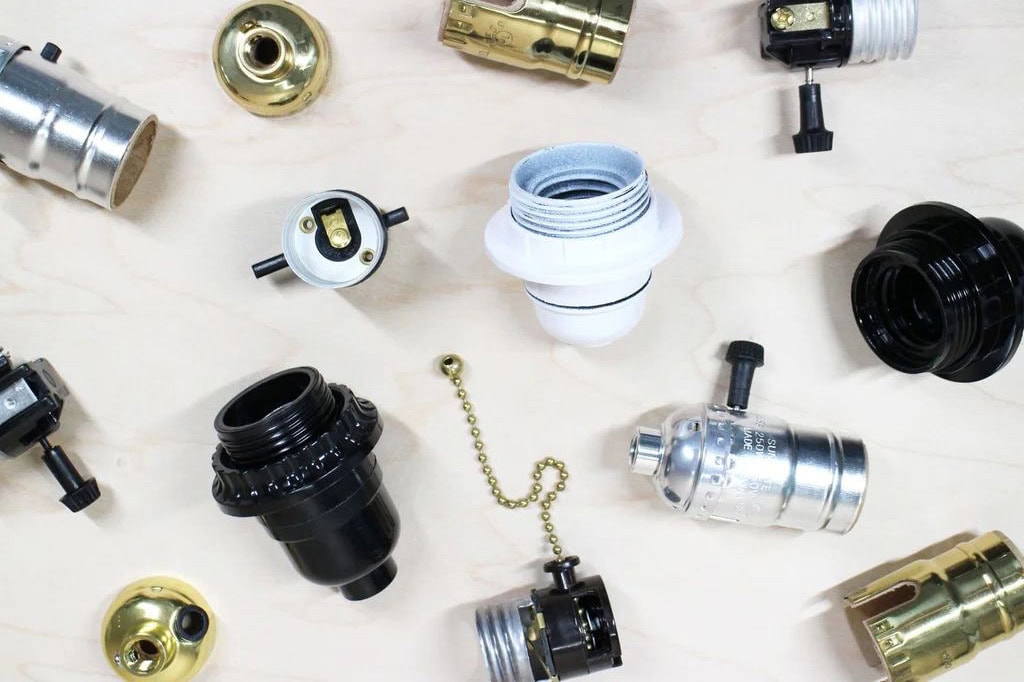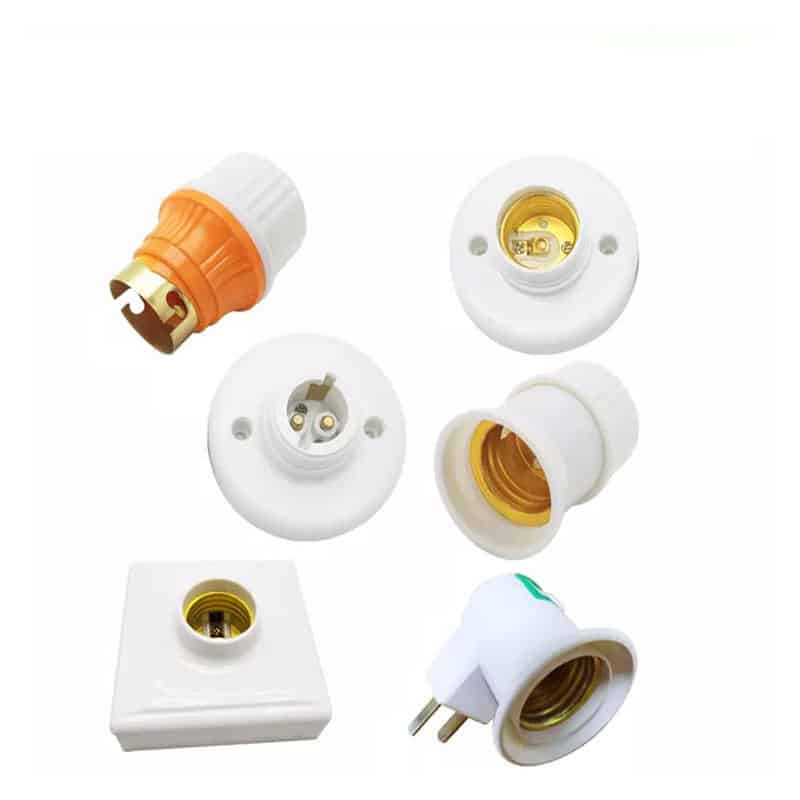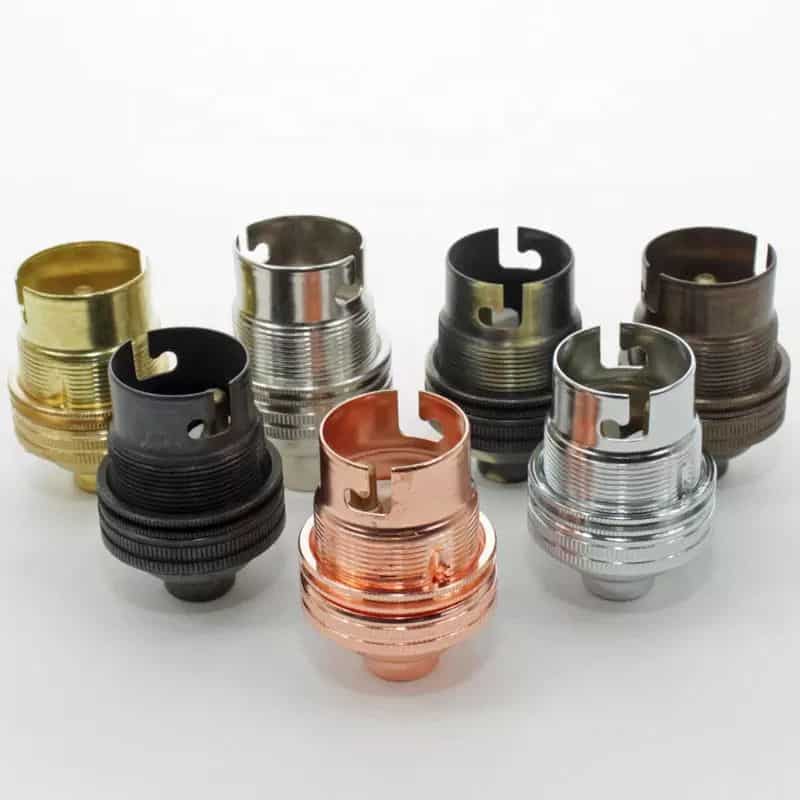People have problems trying to make bulbs work between countries like India and the USA. This can lead to bad lighting performance or electrical hazards. Understanding the differences between socket standards can help avoid these problems and keep you safe.
Indian bulb holders differ from American bulbs in base types and voltage standards. Indian bulb holders use B22 bayonet bases, and American bulbs use Edison screw bases like E26 and E27.
Find out how to tell the difference between Indian and American bulb holders and how they affect compatibility.

Voltage Standards Between India and the USA
The first major difference between Indian and American bulbs and light holders is the voltage system. In India, the standard voltage is 220-240V, while in the USA, it’s 110-120V. This disparity means that bulbs designed for Indian sockets are built to handle higher voltages, whereas American bulbs require lower voltage systems. If a US bulb is plugged into an Indian socket, it could overheat or malfunction due to this difference in voltage capacity.
Indian sockets often feature greater insulation to withstand the higher voltage, whereas American systems focus more on energy efficiency due to lower voltage outputs.
Bulb Base Types (B22 vs E26/E27)
Another significant difference lies in the types of bulb bases used in each country. In India, the common bulb holder is the B22 bayonet type, characterized by two pins that lock into place. In contrast, American bulb holders predominantly use E26 and E27 Edison screw bases, which require screwing in the bulb. The B22 system is considered quicker for installation, while E26 and E27 are more common globally for screw-in bulbs.
While both systems serve the same purpose, they are not interchangeable without adapters. Homeowners and businesses must use socket adapters to ensure compatibility between these two systems.

Plug and Socket Compatibility
The plug and socket systems in India and the USA differ significantly. Indian plugs typically use Type D or M, with three round pins, while American plugs use Type A or B, featuring flat blades. If someone attempts to use a light fixture from India in the USA, it would require an adapter or conversion kit to fit the electrical outlets properly. Similarly, an American fixture won’t fit into an Indian socket without the proper modifications.
These differences extend to the grounding systems used, and using the wrong plug type without an adapter can lead to safety hazards, such as short-circuiting or even fires.
Use of Adapters and Converters
When moving fixtures or bulbs between the two regions, adapters or converters are necessary. For example, converting an Indian B22 bulb to fit into an American E27 socket is possible using a B22 to E27 adapter. These adapters allow the use of foreign bulbs in different fixtures but come with limitations, particularly around wattage and voltage compatibility. A converter may also be needed to adjust the voltage to prevent damage to the bulb or the fixture itself.
While adapters are easily available, they should be used with caution to avoid issues like overheating or electrical shorts.

Certification Standards
Certification standards differ between India and the USA. Indian light sockets often follow BIS (Bureau of Indian Standards), whereas American systems adhere to UL (Underwriters Laboratories) standards. These certifications ensure the safety and durability of electrical components. However, they are not mutually recognized, meaning a product certified in one region may not meet safety requirements in the other.
Understanding these certification differences is crucial for buyers, especially when sourcing fixtures and bulbs internationally.
Frequency Differences
The electrical frequency also varies between the two countries. India operates at a frequency of 50 Hz, while the USA uses 60 Hz. Although this might seem like a minor detail, the difference can affect the performance of certain lighting systems, especially if they contain timers or sensitive electronic components. Devices and lighting designed for one frequency may not work optimally, or at all, when used in the other region.
Ensuring that lighting components are compatible with the frequency of the country where they are being used is essential to avoid flickering and premature bulb burnout.

Historical Context of Lighting Standards
The development of different lighting standards in India and the USA stems from their historical electrical systems. India adopted the British system, which explains the use of the B22 bayonet fitting, while the USA, influenced by Edison’s work, developed the Edison screw fittings like E26 and E27. These differences have persisted due to the lack of a universal standard for light sockets and fittings, resulting in a fragmented market where certain types of bulbs are prevalent in one country but rare in another.
Impact of LED Technology
With the rise of LED technology, some of these differences are beginning to blur. Modern LED bulbs are often designed to be more adaptable across voltage ranges, and many manufacturers produce LED bulbs that are compatible with both B22 and E26/E27 bases. However, even with LEDs, it is crucial to check the voltage rating to ensure the bulb can handle the electrical system in the region where it will be used.
This adaptability makes LEDs a more universal solution, but compatibility checks remain important.

Key Differences Between B22 and E27 Bulbs
- B22: Used primarily in India, this base uses a bayonet fitting, requiring a push and twist action to insert or remove the bulb. It supports 220-240V systems.
- E27: Common in Europe and America, this screw-in base is slightly larger than its E26 counterpart. It’s designed for higher voltage systems but can also work in certain lower voltage systems with the correct bulb type.
These two systems are not interchangeable without an adapter due to the differences in base design and voltage capacity.
Sourcing and Import Challenges
For lighting manufacturers, sourcing components across different markets poses challenges. Indian suppliers might produce primarily B22 sockets, while American buyers typically seek E26 or E27 fittings. Importing lighting components, especially bulk purchases for industrial use, requires careful attention to these differences, or buyers risk purchasing incompatible components. International certifications and understanding voltage limitations are key when importing bulbs or lighting fixtures across borders.
Final Words:
Indian lamp holders are different from American bulbs in several key ways, including voltage standards, base types, and plug compatibility. You need an adapter to use them across the border.













